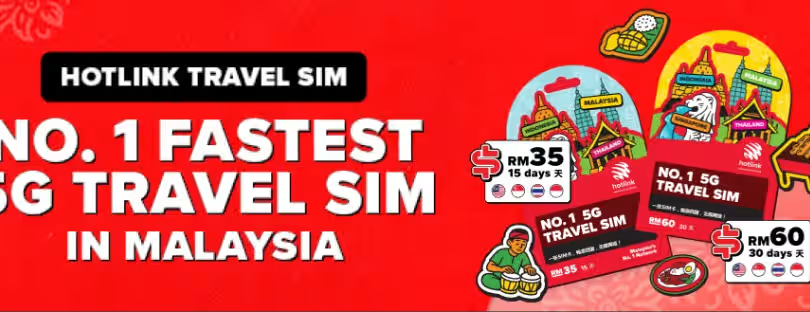
The Best eSIM Activation Methods in 2025: QR Code, App, or – Magic Link?
So, you’re about to jet off on your next adventure, and you’ve decided to go with an eSIM—great choice. No more fumbling with those microscopic SIM trays or praying the corner store sells your carrier. But then comes the next question: how do I activate this thing?
And that’s where things start to get interesting.
Depending on which eSIM provider you choose, the onboarding experience can be smooth as silk or frustrating enough to make you wish you’d gone old-school. Between QR codes, app installs, and direct install links, everyone seems to be racing toward one goal: instant eSIM activation with as little friction as possible.
Let’s dive into how some of the top players are handling this — the good, the bad, and the “wait, what do you mean I need a printer?”
Let’s break down the three real activation methods that exist today, compare how top eSIM providers handle them, and propose what the UX gold standard should be.
First—How Can eSIMs Be Activated Today?
There are three legitimate activation methods used by consumer eSIM providers today — nothing else. No NFC taps, no sci-fi gestures. Just these three:
1. QR Code Scan
This is the classic method. After buying your eSIM plan, you receive a QR code (usually via email or on a download page). Then you go to:
Settings → Mobile Data → Add eSIM → Use QR Code
It’s a reliable process and works on both Android and iOS.
| Pros | Cons |
|---|---|
| Familiar, especially to those who’ve used eSIMs before | Clunky if you’re on a single device (how do you scan a QR code that’s on your screen?) |
| Doesn’t require installing any app | Risky in a rush — lose the email or scan the wrong thing and you’re stuck |
| Confusing for first-timers |
2. In-App Installation (Over-the-Air / OTA)
Here, the provider gives you their app (via App Store or Google Play). Once inside, you buy a plan and tap something like “Install eSIM”. The app triggers native eSIM installation — no QR code needed.
3. Direct Install via Link (aka “Magic Link” or Deep Link)
This is the smoothest method available today. After you purchase your plan, the provider gives you a special activation link. You tap that link on your phone, and it launches the phone’s built-in eSIM install dialog. No app, no QR code.
| Pros | Cons |
|---|---|
| Absolutely seamless — just tap, install, and go | You must click the link on the device where you want the eSIM installed |
| No login, no setup, no app download | Not all providers offer this (yet) |
| Perfect for people traveling with a single phone or tablet |
Comparing Top eSIM Providers by Activation UX
Let’s look at some of the biggest names in the game — and how they guide you through eSIM activation:
YESIM
- Supports: 1-Click Installation
- Best UX Method: Set up eSIM in minutes, just press the “Install eSIM” button
Airhub
- Supports: Link + App + QR
- Best UX Method: In-app install.
- Pain Points: No link-based install yet; app has improved, but the flow is still QR-first.
Ubigi
- Supports: QR + direct link (from their website)
- Best UX Method: “Install on this device” button triggers eSIM setup with zero clicks wasted.
- Pain Points: Slightly limited plan options compared to others, but installation is excellent.
aloSIM
- Supports: App + direct install link
- Best UX Method: Magic link. After purchase, you tap the link and you’re installing — no app, no QR, no fluff.
- Pain Points: Few — one of the smoothest providers out there.
Holafly
- Supports: Activation link
- Best UX Method: Once you tap “Install” (via QR or link), the eSIM profile downloads to your phone.
- Pain Points: Few — another one smooth providers out there.
What Should the Gold Standard eSIM UX Look Like?
Here’s the ideal, frictionless experience every provider should aim for:
1. Buy on Mobile → Get a Magic Link
After purchase, the thank-you screen says:
“Tap here to install your eSIM”
No login, no scanning. Just a tap.
2. Native Install Dialog Launches Instantly
One tap = eSIM downloaded and installed via iOS or Android’s system interface. Done in 60 seconds.
3. No App Required (but available for extras)
Apps should enhance the experience — not be required to get connected. Let users install later for managing plans, topping up, or chatting with support.
4. Auto APN Configuration
For Android especially, APNs should configure automatically — users shouldn’t have to touch this.
5. Live Progress and Feedback
“Installing… Activated!” Add animations or simple text to show what’s happening. A confused user is an offline user.
Final Thoughts: Who’s Winning the eSIM UX Race?
In 2025, eSIMs are finally starting to live up to their promise — but only a few providers are really delivering that “install and go” experience travelers expect.
- Airhub, Ubigi, and aloSIM are leading with magic links and mobile-first flows.
- Holafly, Yesim, and Zetexa are solid, especially in-app — but link-based installs still vary.
If you’re looking for a hassle-free onboarding experience the next time you travel, look for these three words:
“Install instantly on this device.”
Because with the right provider, getting online should take less time than finding your gate.










